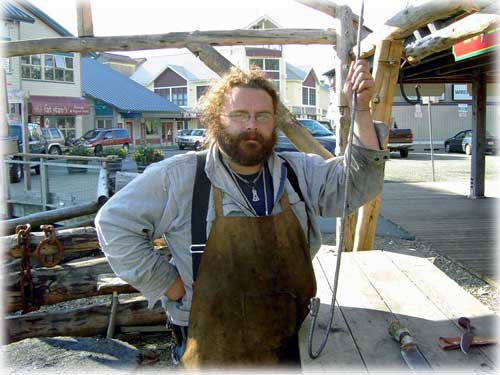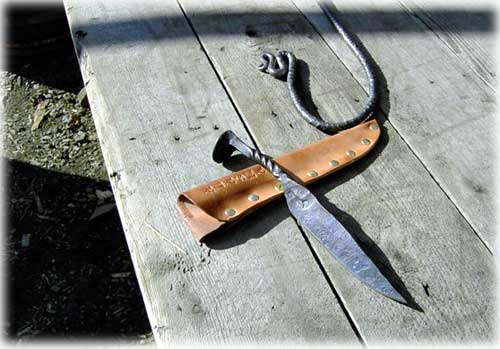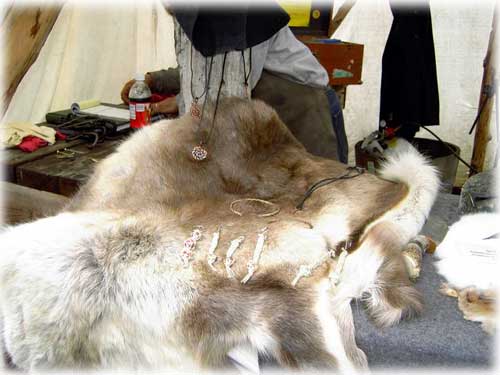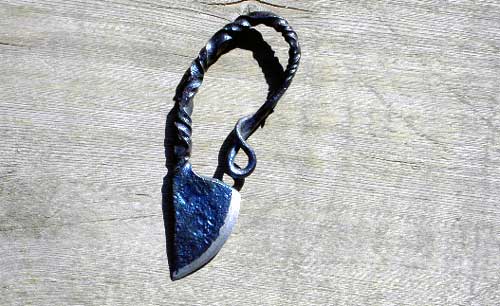 Interview and photos by Kathleen Star Stack Story by Louise Brinck Harrington June 13, 2005
 Photograph by Kathleen Star Stack "It's in my blood that's the best way I can describe it," says Jake Beimler, taking a break to talk about blacksmithing and how he got started. "My great-grandfather was the last working smith in the Kallispell area of Montana. His stuff is still in the museum there." Though Beimler did not get
the chance to know his great-grandfather, he inherited his metal-working
genes. "Ever since I was a little kid growing up in Montana
I'd stick nails in fireplaces, heat them up and beat them flat,"
he says.  Photograph by Kathleen Star Stack
If blacksmithing is Beimler's first love, Viking battle reenactment is his secondand the two go hand in hand. "I couldn't be a Viking if I wasn't a blacksmith and I couldn't be a blacksmith if I wasn't a Viking," he says. "Viking battle reenactment" is just what it sounds like: present day performances of long-ago battles-very long-ago, back in the Dark Ages. Beimler has organized a Viking fighting troupe here in Ketchikan. "We fight with live steelwhich means our swords don't have an edge but they are real," he explains. "And we really go to town on each other." The name of his troupe is Grott, the Lost Vikings. As its leader, Beimler holds training sessions three times a week and takes training seriously. "It takes up to a year to train a fighter," he says, "before I even think about putting him in a show. We fight in closed areas, places like the [Plaza] mall, and we cannot afford to make mistakes."  Photograph by Kathleen Star Stack
The Viking or Dark Ages-as
opposed to the later Medieval Ages-appeal to Beimler because
they were "a time of honor, a time before people became
sovereign to a king, when people were independent and responsible
for themselves. It was a time when life revolved around the farm."
It was also a time of legends, Norse legends.  Photograph by Kathleen Star Stack
Though blacksmithing is hard work, Beimler believes it teaches him patience. He used to consider himself an impatient man until he realized he can work in his shop "for twelve or thirteen hours a day and not even look up." He credits his wife Jamie (formerly Jamie King) with being "the driving force" behind his blacksmith business, as well as his acting troupe. "She's very supportive of me," he says. The couple's one-year-old son is appropriately named Odin, after the Viking god of war and wisdom. Ketchikan's local blacksmith is happy doing what he loves and it shows in his work. "I put a lot of heart into every piece I make," he says.
Publish A Letter on SitNews Read Letters/Opinions Submit A Letter to the Editor
|